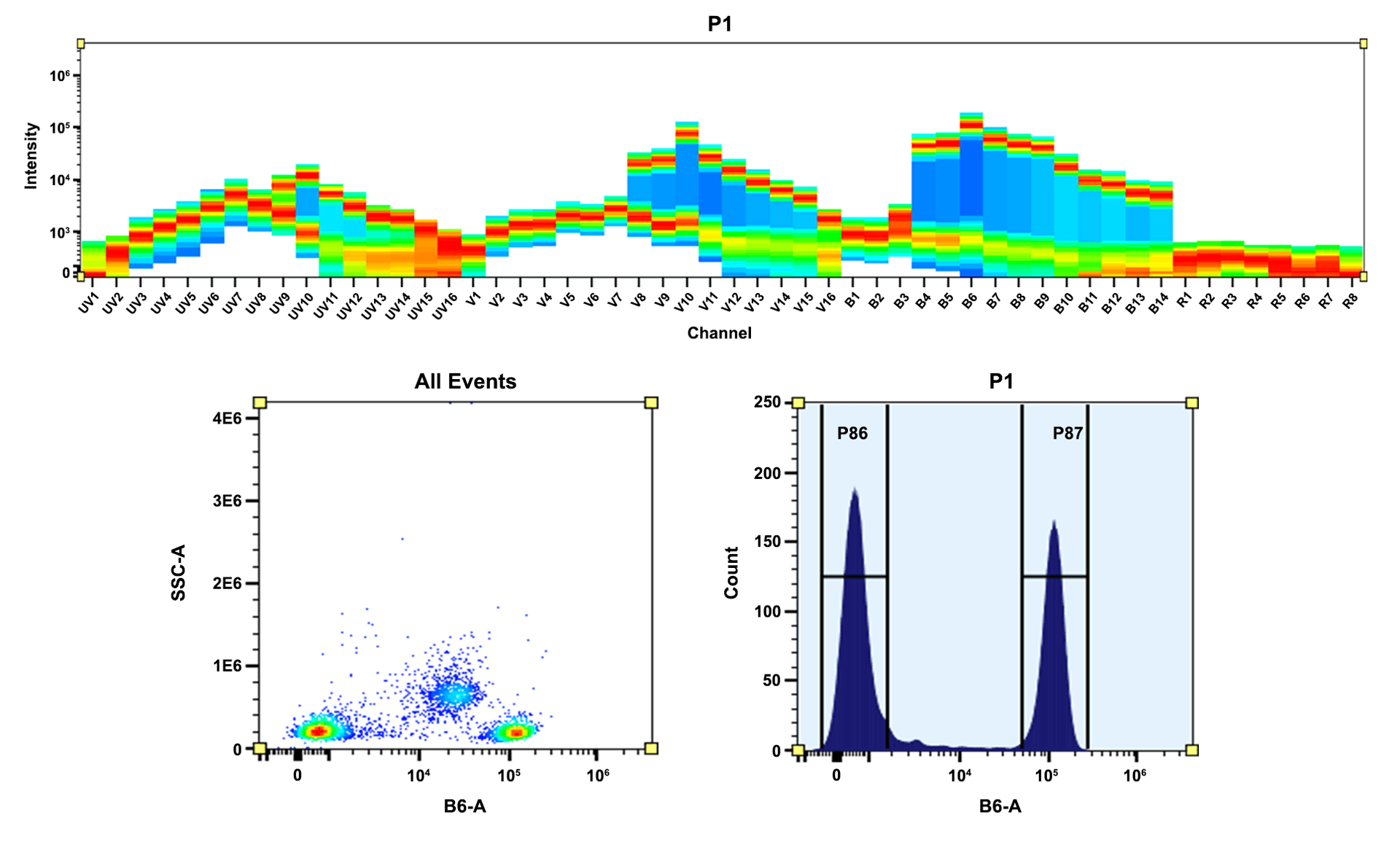Phycoerythrin (PE)
R-Phycoerythrin (PE) is isolated from red algae. Its primary absorption peak is at 565 nm with secondary peaks at 496 and 545 nm. The relative prominence of the secondary peaks varies significantly among R-PEs from different species. PE has three types of subunits: alpha (20,000 daltons), beta (20,000 daltons) and gamma (30,000 daltons). The molecular weight of intact PE has been found to be about 240,000 daltons. The alpha subunit of PE contains only the phycoerythrobilin (PEB) chromophore, while beta and gamma subunits contain both PEB and phycourobilin (PUB). Variability in the absorption spectra of PEs from various species reflects differences in the PEB/PUB ratio of the subunits. PE and closely related B-PE are the most intensely fluorescent phycobiliproteins, with quantum efficiencies probably in excess of 90%, and its orange fluorescence is readily visible by eye in any moderately concentrated solution.


| Catalog | Size | Price | Quantity |
|---|---|---|---|
| 2556 | 10 mg | Price | |
| 2557 | 100 mg | Price | |
| 2558 | 1 mg | Price |
Physical properties
| Molecular weight | ~240000 |
| Solvent | Water |
Spectral properties
| Correction factor (280 nm) | 0.175 |
| Extinction coefficient (cm -1 M -1) | 1960000 |
| Excitation (nm) | 565 |
| Emission (nm) | 574 |
| Quantum yield | 0.82 |
Storage, safety and handling
| H-phrase | H303, H313, H333 |
| Hazard symbol | XN |
| Intended use | Research Use Only (RUO) |
| R-phrase | R20, R21, R22 |
| Storage | Refrigerated (2-8 °C); Minimize light exposure |
| UNSPSC | 12171501 |
| CAS | 11016-17-4 |
Documents
Contact us
| Telephone | |
| Fax | |
| sales@aatbio.com | |
| International | See distributors |
| Bulk request | Inquire |
| Custom size | Inquire |
| Technical Support | Contact us |
| Request quotation | Request |
| Purchase order | Send to sales@aatbio.com |
| Shipping | Standard overnight for United States, inquire for international |
Page updated on December 15, 2025

